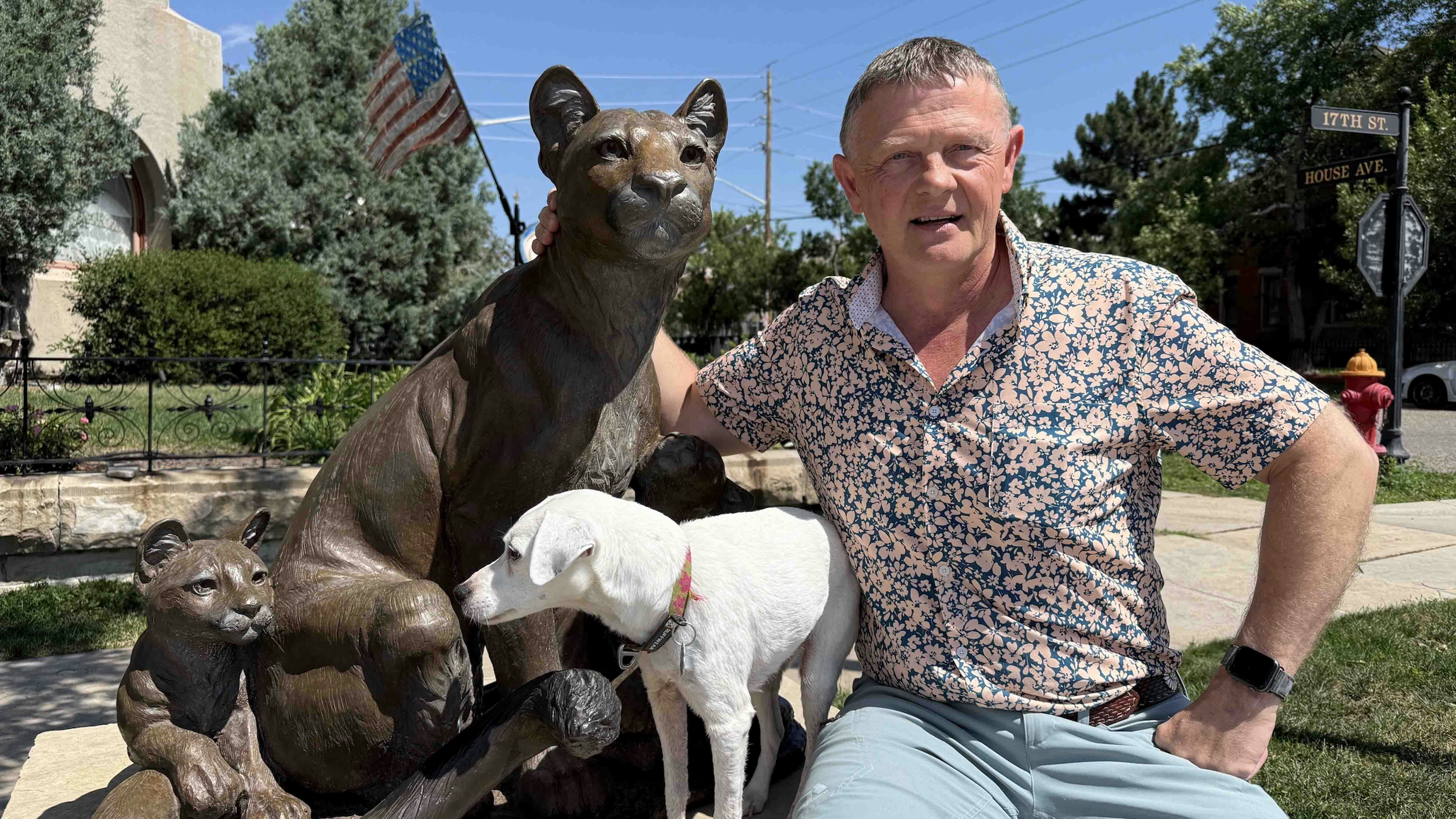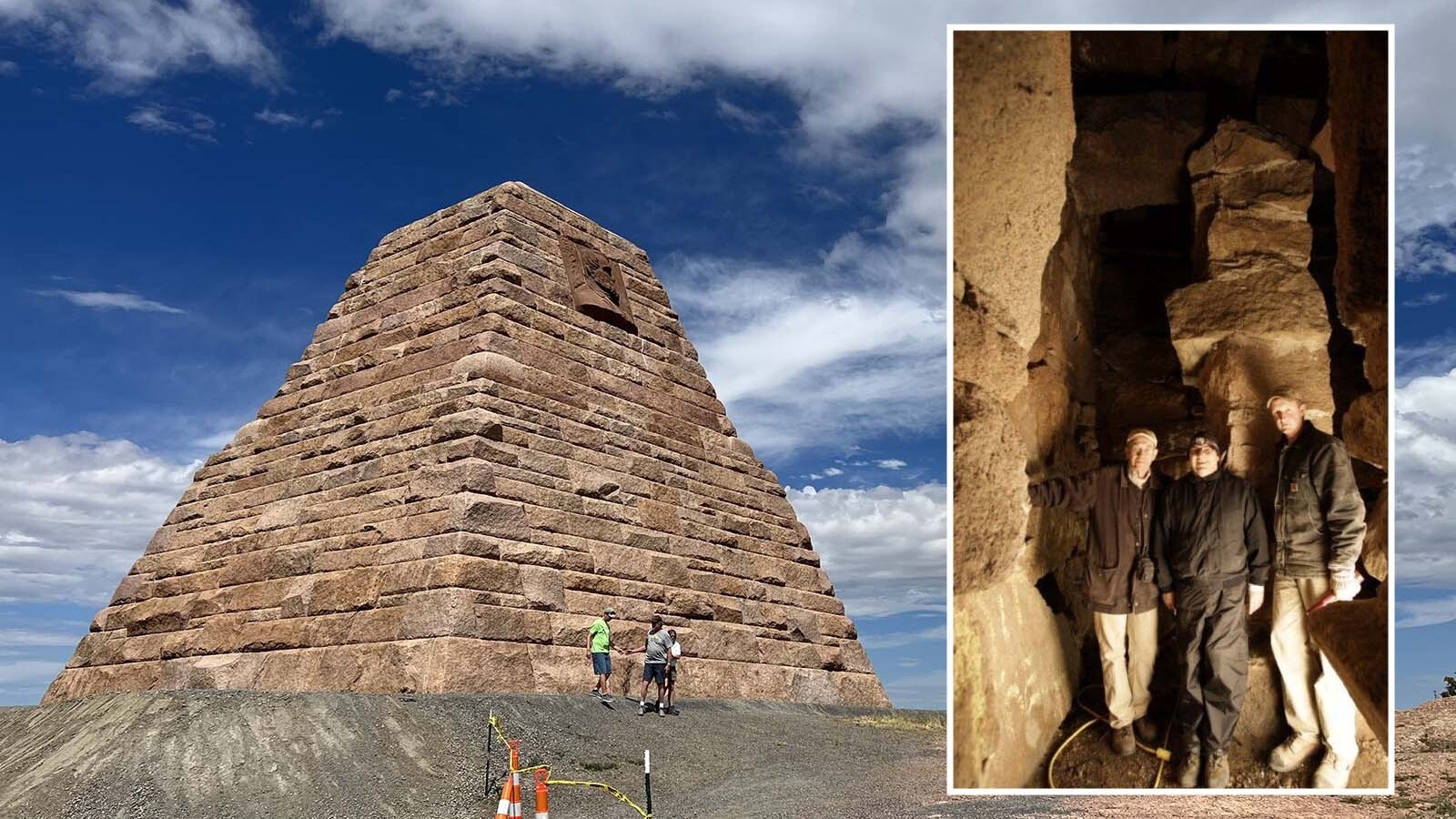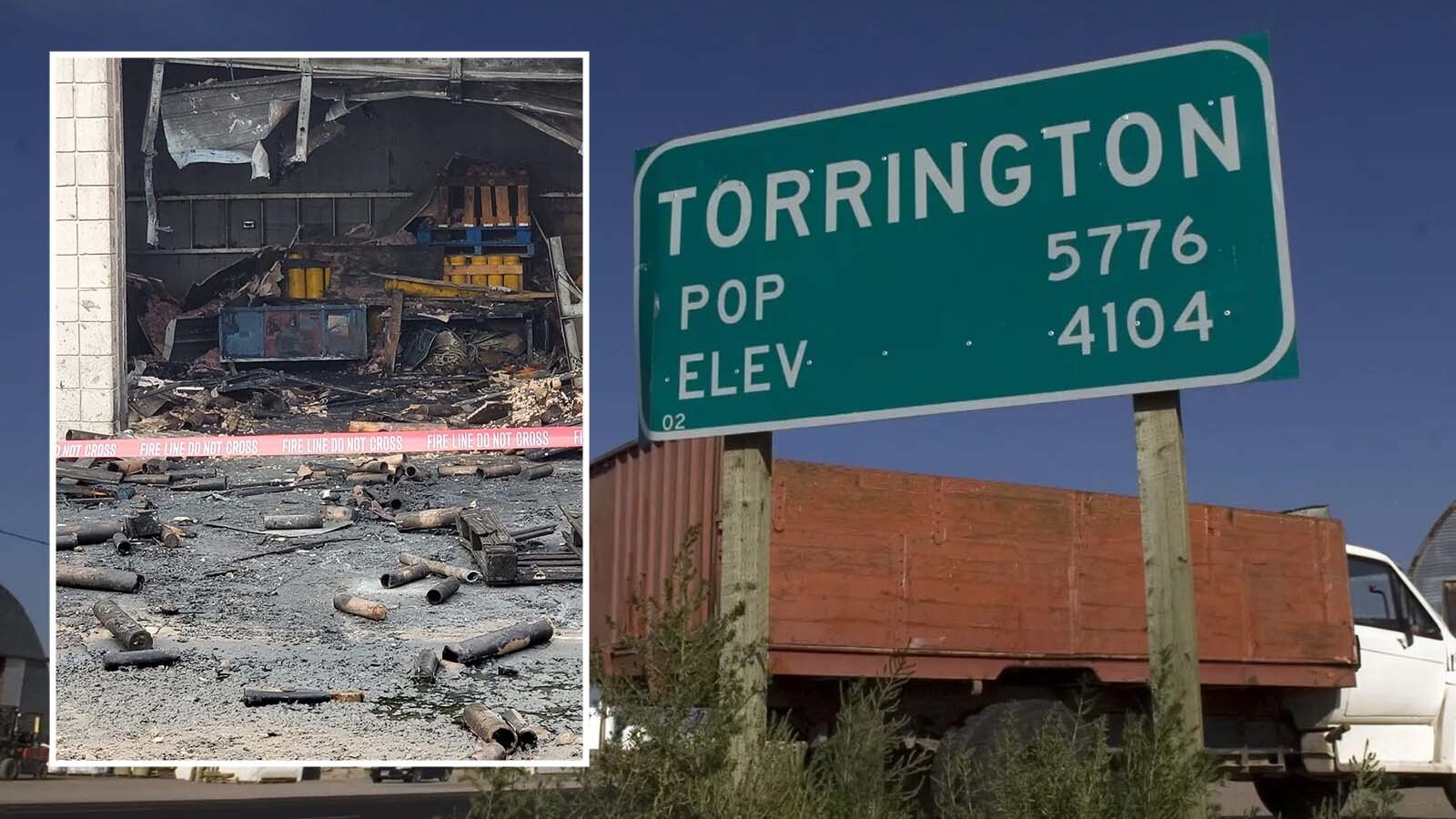Perspective is everything.
“Location, location, location,” is the well-known real estate declaration. Offered as Exhibit A: The statue of Byron Sessions, a surveyor and founder of the small Wyoming town of Byron.
A photo making the rounds on social media caught our attention at Cowboy State Daily.
“Wowzers, is that a map tube he’s holding or is Byron just happy to see me?” would be a loose paraphrase of the initial reaction.
It is a surveyor’s map tube and the erection of Session’s monument can be found in the town park bearing his same name in Big Horn County. The small town of about 549 people located just southwest of Lovell was founded by Sessions at the turn of the 20th century.
The man quite literally considered the father of Byron pitched his tent in the Bighorns in 1900. As the construction superintendent on the Sidon Canal project, Sessions is credited with irrigating the Byron area — some 17,715 acres — to make the land more hospitable.
Monumental Monument
Byron locals have heard them all.
“How long has it been up? How long will it stay up?”
“Shows how hard our founding father worked on that canal.”
“He was a big man in our community.”
“Oh, the Byron statue? It’s a long story.”
Even the Lovell Chamber of Commerce had to get in on the act, sharing on its website: “A prominent leader of the Mormon expedition to the Big Horn Basin … His statue is prominently displayed …”
Prominent, indeed.
Sessions can be seen proudly grasping his scroll unless one is passing through Byron travelling west to east. In that case he appears to be, well, just happy to be there.
In Texas, Too
Angleton, Texas, has a similar issue with its statue honoring Stephen F. Austin. The 76-foot-tall statue of the “Father of Texas” is the centerpiece of a 10-acre park surrounding it. Austin is presumably holding the 1823 agreement that allowed for 300 families to settle in Texas.
Pity the worker that has to polish the Byron statue to keep it clean. We reached out to town of Byron Public Works Director Jacob Gruell to ask how often the statue is rubbed down, who does it and does anyone have video of that process.
Gruell did not respond.
If Sessions or his town has an image problem, no one in Byron seems to be aware of this fact. Everyone we contacted — from the mayor to several local businesses — either did not know about the compromising angle of repose (or angle of arouse, in this case), or they did not know there was a statue at all.
The Photos
Perhaps the hubbub is all the doing of Matthew Thomas.
He makes annual photo contributions of the statue on Wyoming Through the Lens and other social media sites. His posts in 2021, 2022, 2023, 2024 all elicit similar responses ranging from impromptu history lessons to the predictable double entendres.
Thomas appears to be the only one keeping the story going, and growing.
“I pass by it every year when driving through,” Thomas told Cowboy State Daily. “I like to explore things I’ve never seen before. I’ve driven past it a million times, and one day I stopped. I walked up to it. And then I walked around it. And, bam, there it was.
“Now anytime I have friends or family in town and we are driving that way, I say, ‘Let me show you a side of Byron Sessions that you won’t see from the road.’”
Thomas’ posts garner occasional reprimands from members of the Latter-day Saints (LDS) community or from proud Byronites. He’s just trying to have a little fun and does not mean to belittle anyone or their beliefs.
“I’ve been accused of taking the photo to somehow mock Mormons,” he said. “And that’s not the case at all. I just think it’s kinda funny. I know it brings a lot of people a laugh.”
Called To Colonize
Sessions’ long Wyoming story begins and ends in Utah. He was born Nov. 7, 1851, and died Jan. 5, 1928, in Salt Lake City. Married to Idella “Ida” Winn Twombly in 1870, the couple lived in Woodruff, Utah, for almost 30 years.
But Sessions’ story was only beginning.
A member of the Church of Jesus Christ of Latter-day Saints, Brother Sessions was called by LDS President Lorenzo Snow to join a 14-member team working with 30 church members to create a community in the Big Horn area.
“Brother Sessions, it is the desire of the church that you move your family out into that land, take charge of the construction of the canal, and stay until it is completed. Now what do you say about it?” Snow reportedly said, according to a Sessions biography.
“President Snow, I accept the call and will fill it to the best of my ability,” Sessions answered.
By 1900, Latter-day Saints had established more than 500 communities from Canada to Mexico. Thousands of families were called by church leaders and sent by assignment to establish these communities. It was a planned, purposeful colonization on a massive scale.
The early Mormon settlements of Byron and Cowley, along with the boosting of the population of an already-established Lovell, were a direct result of LDS colonization in Wyoming.
Further, the establishment of these communities in the northwest section of Big Horn County was made possible, in part, by a utilization of the Carey Act of 1894, which provided free state desert land in exchange for irrigating, occupying and cultivating the land.
The act was the brainchild of Wyoming’s fourth governor, Gov. William A. Richards, who was a surveyor by trade.
Richards met directly with LDS president Snow to formulate the colonization plan in the upper Big Horn Basin. It was actually the governor’s influence that talked Snow out of using land offered by Buffalo Bill Cody along the south fork of the Shoshone River.
The Carey Act proved little-used, however.
State engineer Fred Bond stated in a report in 1900 that such massive undertakings were only practical for government entities. For the most part that was true, with the exception of LDS pioneer communities established in the late-1890s along the Greybull River such as Burlington and Otto, as well as the settlements of Byron, Cowley and Lovell.
Irrigation Sensation
It was Sessions’ doggedness in tapping the Shoshone River, then called the Stinking Water, for its life-giving water that essentially made Byron a town and led to a corresponding statue for its founder.
The Sidon Canal was a large-scale irrigation effort led by Abraham O. Woodruff with Sessions as his right-hand man in charge of surveying.
Work on the canal began May 28, 1900, with families living in wagons and tents, coping with rattlesnakes, ticks and the ever-present blowing sand. The vision? Make fertile a land filled with little more than greasewood, prickly pear cactus and scrub sagebrush.
Plans for the Sidon Canal called for a 37-mile-long ditch to be carved out of the rocky earth, weaving its way through the Byron and Cowley flats as it watered the parched landscape.
After a year, the canal was functional enough for crops to be raised along the Byron bench. The towns of Byron and Cowley were crudely platted, and many church members began building permanent homes in preparation for winter.
Work on the canal was done by a volunteer force of Latter-day Saints. No one was paid. Workers were offered stock in the Sidon Canal Co., signed by Sessions. Two percent of the stock value was paid by each man in cash and used to finance the project.
The Sidon Canal was eventually completed in 1904.
Miracle At The Rock
The canal project included the famous miracle of Prayer Rock.
Early in the digging construction, workers encountered an immovable boulder about 8 feet high. Sessions’ son Biney said it would be impossible to move it. After thoughtful prayer, his father promised it would be moved by 4 p.m. the next day.
"I prophesy in the name of Israel's God that that rock will be [moved] tomorrow at this time,” Sessions declared.
The following day, Sessions ordered a hole be dug around the rock so that a powder charge could be slipped underneath and the obstacle could be blown out of the way.
Suddenly, at 3:55 p.m., Sessions ordered his men out of the hole to take a break. That was odd, according to the story, because they had just finished a break 10 minutes earlier.
As soon as the last man was out of the hole, the giant boulder split in two and provided space for the canal to flow unimpeded.
A historical marker 2.5 miles west of Byron shows the location and provides details of the incident.
Polygamous Marriage
Sessions was also known for a more forgettable reason. As his wife Ida became bedridden with illness, Sessions took another wife, Janet Wortherspoon Easton, on Sept. 14, 1903.
Plural marriage had officially been suspended by the Church of Jesus Christ of Latter-day Saints in 1890, but some church members and leaders continued to perform polygamous marriages in secret. The 1904 “Second Manifesto,” issued just months after Sessions' second marriage, took a stronger stance against polygamy in the church.
Within a few years of the marriage, the new Mrs. Sessions left Wyoming with her daughter and lived under an assumed name. By 1914, Janet had divorced Byron and married another man.
Honored 107 Years Later
It would be more than a century before Byron Sessions would receive his due. Some 14 years in the making, the statue and park it stands proud in was finally ready for its unveiling in July 2007.
The Byron Memorial Park dedication was attended by more than 500 people, according to the Lovell Chronicle. Many of those in attendance were descendants of Sessions, including great-great-grandson Steve Wirth, the artist who sculpted the statue.
After the death of Ida on Nov. 20, 1923, Sessions frequently traveled between Byron and Salt Lake City.
A longtime sufferer of asthma, Sessions died in Salt Lake City on Jan. 5, 1928. He was 76. Sessions was laid to rest in the Byron Cemetery.
Contact Jake Nichols at jake@cowboystatedaily.com

















